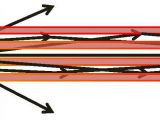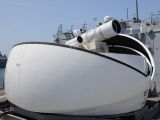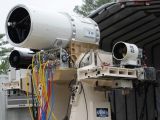It is a sad fact of life that, despite the World Wars and Cold War being long over, countries around the world are still doing what they can to outdo everyone else in terms of weaponry. Still, at least some of the breakthroughs spurred by weapon R&D have more benign applications.
Lasers were weaponized a long time ago, but researchers in the US, funded by the US Air Force, Defense Threat Reduction Agency (DTRA), and the National Science Foundation, have found a way to make them stronger.
The way they did it? With the help of the air around us. The short version of it is that they took the principles that allow glass and plastic waveguides to transmit laser light via optical fiber, then applied those same principles to air.
The result was something that is being called “air optical fiber” which lets scientists produce air waveguides that can transmit laser through free space much more easily.
Lasers have never been able to travel well through space, because they start to lose coherence and fizzle once they go past a certain distance.
So, while lasers are good over short distances, they don't do well over longer stretches of land. It is why they have been mostly relegated to engineering and repair work, while weaponry focused on good old fashioned ballistics.
It's not just inefficiency that laser researchers had to contend with either. Trying to use a laser over a long range needs a lot of power, and strong lasers have enough energy to ionize the air they travel through. This causes air blooming, an effect that causes the laser to fizzle, lose coherence nearly completely. Basically, the laser self-destructs after a few meters.
Waveguides are, thus, very important, but it's not like you can just waltz into an enemy camp and lay optical fiber near your target. You may as well bomb the place sky high instead. Also, when it comes to communications, like data networks, physical fiber optics have already kind of reached a limit.
There are plans to improve throughput, of course, but being able to turn the air into a waveguide, essentially eliminating its status as the bane of all laser applications, could render all these concerns moot.
It would work like this: low-pressure regions would be caused by femtosecond heating laser pulses (the red filaments in the air guide) creating a ring of tiny sound waves converging on a center point. In layman terms, this would create a high-pressure channel surrounded by a low-pressure region.
The main laser beam would be transmitted along one or more of these high-pressure channels, as light would bound off the lower refractive index of the low-pressure region (like the sides of a glass fiber), thus maintaining the laser integrity over long distances.
Lab tests have showed a 50% increase in signal quality, which, for long distances, could lead to a signal-to-noise ratio improvement of around 104, which is immense.
Free-space laser data networks could benefit greatly from this, as could laser-induced breakdown spectroscopy (technology used by space probes to analyze rock samples). Still, long-range Lidar (laser-based radar, in crude terms) and weapons remain the research group's main focus.

 14 DAY TRIAL //
14 DAY TRIAL // 


